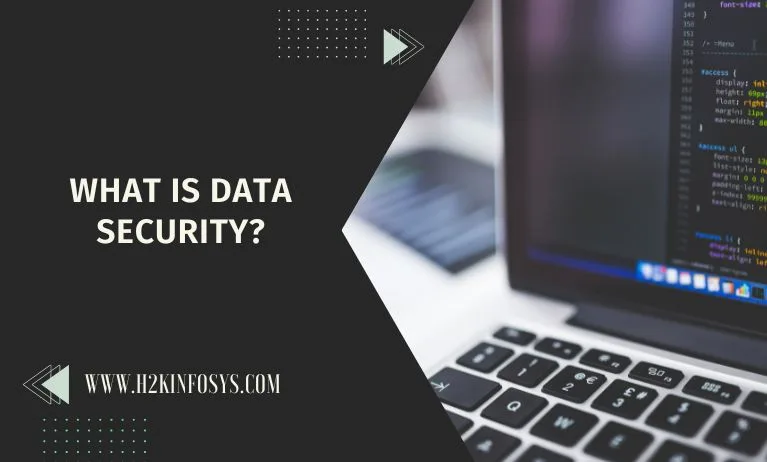Data security is the process of guarding against unauthorised access and other dangers to company and customer data. This entails safeguarding data from dangers such as ransomware and data breaches. A good cyber security course online is vital to learning about Data security.
The vital role of Data Security in the Digital Age
The most important resource for the majority of enterprises is data, and businesses frequently gather substantial amounts of sensitive data. cybercriminals access and steal this data to sell or utilise in upcoming attacks, making it a prime target for them. Solutions for data security can aid in lowering an organisation’s susceptibility to these kinds of attacks. By doing this, they shield the company from dangers to its reputation, finances, and regulatory compliance, among others.
Types of Data Security Threats
There are numerous threats to a company’s data security. The following are a few frequent examples:
- Phishing: Phishing attacks can be used to deceive a target into providing sensitive information or to spread malware that gathers and exfiltrated data to an attacker.
- Ransomware: Ransomware is a danger to an organisation’s data availability and confidentiality. In addition to encrypting data, modern ransomware malware frequently steals data, allowing attackers to access or sell the data if the ransom is not paid.
- Hacking: Sensitive data may be extracted and exfiltrated from an organisation’s systems and applications by an attacker with access to those systems and applications.
- Insider Threats: Trusted insiders may mistakenly or purposefully put corporate data in danger, according to insider threats. For instance, data may be accidentally disclosed on insecure cloud storage or taken by a departing employee.
Data Security vs. Data Privacy
Data privacy and data security are two separate but connected ideas. Data security guards against a wide range of dangers to an organisation’s data. This could include threats made by authorised users or insiders as well as unauthorised user attacks (ransomware, data breach, etc.).
Controlling access to potentially sensitive data is the main goal of data privacy. While some individuals inside a company may have a “need to know” for a particular sort of data, others should not have access to it. For instance, the billing department can require access to clients’ financial data but not IT.
Types of Data Security Solutions and Techniques
Numerous sorts of data security solutions are available to guard against the various dangers to an organisation’s data security. These are some of the most crucial skills a business needs to safeguard its data security.
Discovering and Classifying Data
An organisation must be aware of the data it holds and the security requirements for that data in order to safeguard it effectively. Tools for automatically classifying data so that the proper security measures may be applied to it assist an organisation get visibility into the data it contains.
Data Protection
There are many techniques to secure data against unwanted access. The following is just one illustration:
- Encryption: Data is rendered unintelligible to anyone lacking the secret key required for decryption by encryption algorithms.
- Minimization: Data minimization is the process of gathering and retaining only the sensitive information that a company actually needs.
- Masking: Data masking substitutes non-sensitive characters for sensitive data, for as substituting asterisks for all except the final four digits of a credit card number.
- Tokenization: Tokenization is the process of replacing a sensitive value with a non-sensitive token that can be used to represent it in systems without requiring access to the actual data.
- Anonymization: Anonymization removes personally identifiable information from customer records. True anonymization is challenging to achieve, though.
Data Security Solutions
Solutions for aid in defending an organisation’s data from numerous attacks. The following are some of the instances.
- Monitoring of Files and User Activity: Monitoring files and user activity can assist in spotting unusual or malicious activities that indicate potential dangers to data security. For instance, ransomware encrypts data while carrying out an unusually high volume of file reads and modifications.
- Management of Vulnerabilities: Vulnerability scanners can be used to find security flaws that put data at risk. A business may manage the security of its data more effectively by identifying vulnerabilities and evaluating risk.
Best Practices for Data Security
By putting data security best practices into place, a business can lessen the threat to its data, including the following:
- Data security solutions should be used to appropriately classify, encrypt, and prevent the exfiltration of an organisation’s data. Data loss prevention (DLP) solutions should also be used to block data exfiltration. These safeguards make it more difficult for an intruder to get access to the system and steal the data.
- Least Privilege should be used: Controlling who has access to sensitive information is essential for data security and legal compliance. The risk of data breaches and other dangers is reduced by implementing least privilege, where users only have the access required for their roles.
- User Account Security: Data might be stolen or malware can be installed using compromised accounts. requiring the use of privileged access, multi-factor authentication (MFA), and strong passwords. Using privileged access management (PAM) solutions and enforcing the use of strong passwords can assist to lessen the likelihood that attackers will get access to business systems and data.
- Train Your Staff: Employees of a company are often involved in data security threats. Data security risks can be decreased by training personnel to handle sensitive data responsibly and respond to phishing attacks.
Regulations for Data Security
Many different regulations apply to businesses, and more are continually being developed. The following are some instances of laws that demand the preservation of private consumer information:
- General Data Protection Regulation (GDPR): An EU that mandates strong user rights and data protection requirements for EU individuals’ personally identifiable information.
- The Payment Card Industry Data Security Standard (PCI DSS) is an international standard that was created by major payment card companies to safeguard cardholder data and lower fraud.
- The US law known as the Health Insurance Portability and Accessibility Act (HIPAA) protects the health information amassed by healthcare providers and their commercial partners.
Conclusion
Any company’s cyber security strategy should have data security as a central tenet. The risk of cloud data breaches and the requirement for cloud data protection both increase with the growth of cloud usage. To learn more about protecting data security, check out the cyber security training online.






























